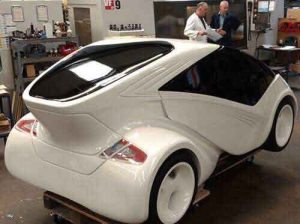
Designers often spend a lot of time coming up with ideas for how to improve something or create something brand new. This covers everything from a brand new product, a building, a component part, artwork and pretty much anything else you can think of.
Everything we see around us started out as an idea in someone’s head. That idea was then made into something real and no doubt improved and developed as time went on.
But how do you know if your idea will work?
This is where model making comes into its own.
Developing ideas through Model Making
Many ideas are presented to the user, customer or manufacturer as a model, mock-up or prototype. This allows the idea to be understood much more clearly than hearing somebody speak about it.
A model is a graphical representation of a design, this means that it usually doesn’t do the job that it’s designed to do. But what it does do, is give a lifelike view of what the end result could look like. At this stage, it’s easy to play around with different materials and tweak designs to come up with something amazing.
A prototype is a working model, this means that as well as looking the part, it actually works. This is invaluable for testing and developing an idea through to fruition. Sometimes several models and prototypes will be produced and changed before the end result is agreed upon.
Why use model making?

In an ideal world with unlimited budget, you come up with a new idea and then go straight to the prototype stage. You may also go down this route for existing products or components, but for something that may take a lot of development work, you may start with something as simple as a piece of paper.
As the idea progresses it’s likely that the move will be towards more sophisticated materials and methods. Working with a model making company will help to understand the types of materials and techniques that can best be used to produced the desired outcome.
Often CAD drawings are produced and models created from this to retain accuracy and allow adjustments to be made on-screen. This type of modelling also allows you to control outside forces such as weather, ensuring adequate testing is done with controlled simulations before working with the actual materials themselves.
Once a Model is created you may move on to a Prototype if that is relevant for your project.
Using rapid prototyping methods to create a prototype is more common now, this means that the production of real working models can be created quickly and cost effectively. Older methods of prototyping can take time and because of this are often more expensive.
The machines to carry out this type of work however are expensive, again another reason to work with a company that is well versed in producing prototypes and has all of the equipment required on site.